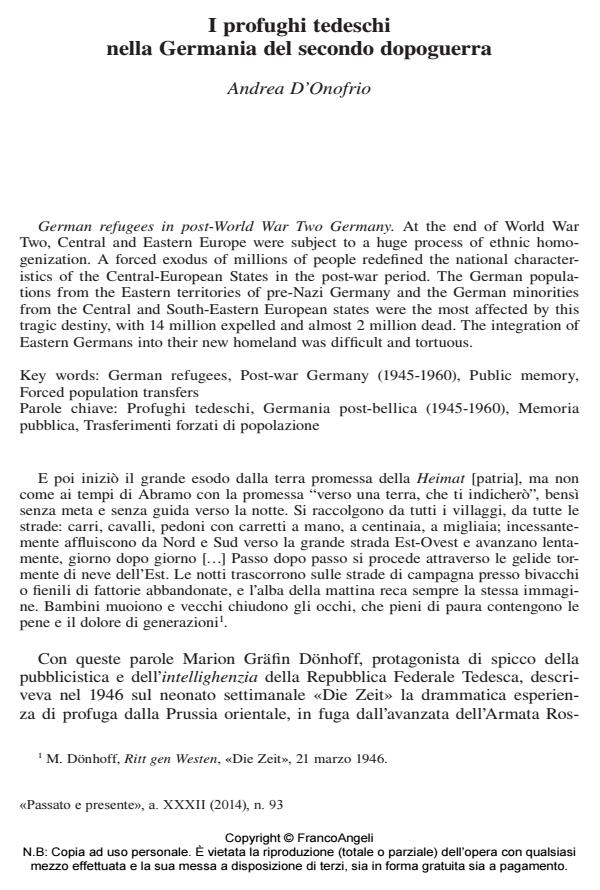German refugees in post-World War Two Germany
Journal title PASSATO E PRESENTE
Author/s Andrea D'Onofrio
Publishing Year 2014 Issue 2014/93
Language Italian Pages 26 P. 41-66 File size 195 KB
DOI 10.3280/PASS2014-093003
DOI is like a bar code for intellectual property: to have more infomation
click here
Below, you can see the article first page
If you want to buy this article in PDF format, you can do it, following the instructions to buy download credits

FrancoAngeli is member of Publishers International Linking Association, Inc (PILA), a not-for-profit association which run the CrossRef service enabling links to and from online scholarly content.
At the end of World War Two, Central and Eastern Europe were subject to a huge process of ethnic homogenization. A forced exodus of millions of people redefined the national characteristics of the Central-European States in the post-war period. The German populations from the Eastern territories of pre-Nazi Germany and the German minorities from the Central and South-Eastern European states were the most affected by this tragic destiny, with 14 million expelled and almost 2 million dead. The integration of Eastern Germans into their new homeland was difficult and tortuous. Key words: German refugees, Post-war Germany (1945-1960), Public memory, Forced population transfers
Keywords: Profughi tedeschi, Germania post-bellica (1945-1960), Memoria pubblica, Trasferimenti forzati di popolazione
- Il lavoro come strumento di integrazione. Profughi e rifugiati tedeschi in Germania Occidentale durante la ricostruzione Roberto Sala, in SOCIETÀ E STORIA 156/2017 pp.321
DOI: 10.3280/SS2017-156004
Andrea D'Onofrio, I profughi tedeschi nella Germania del secondo dopoguerra in "PASSATO E PRESENTE" 93/2014, pp 41-66, DOI: 10.3280/PASS2014-093003